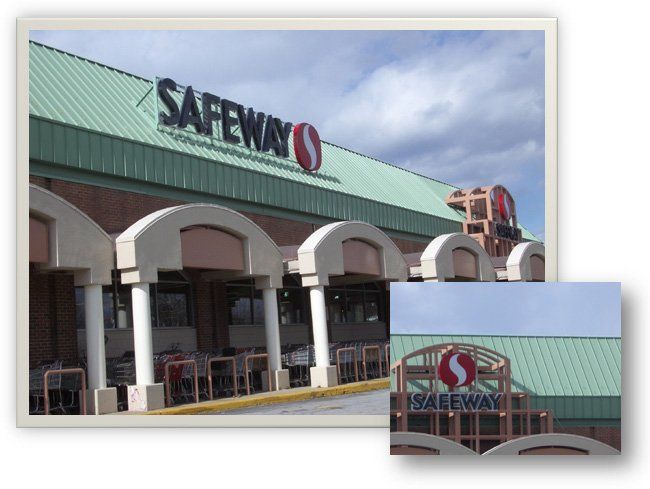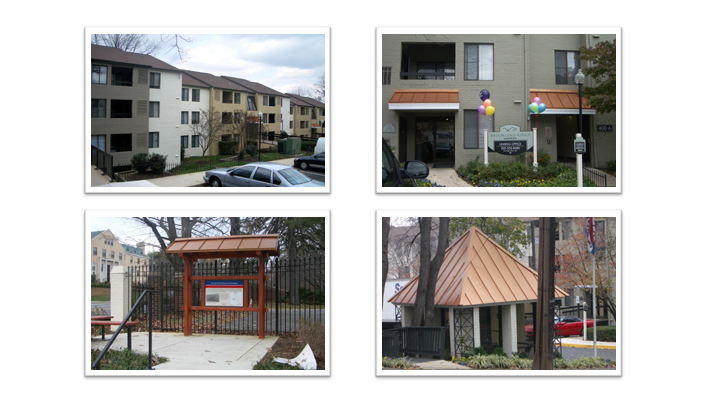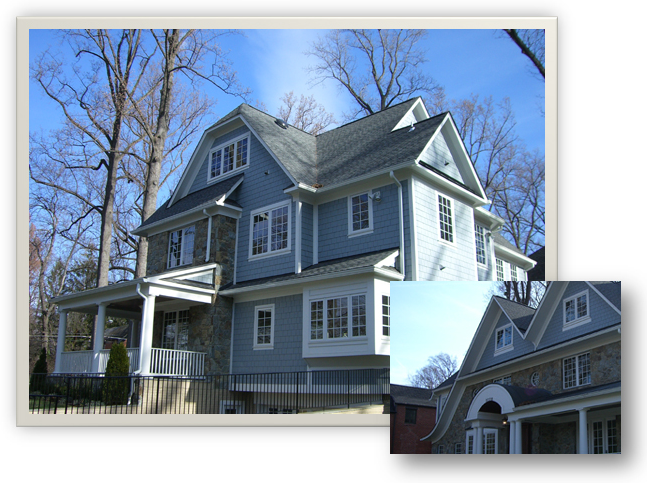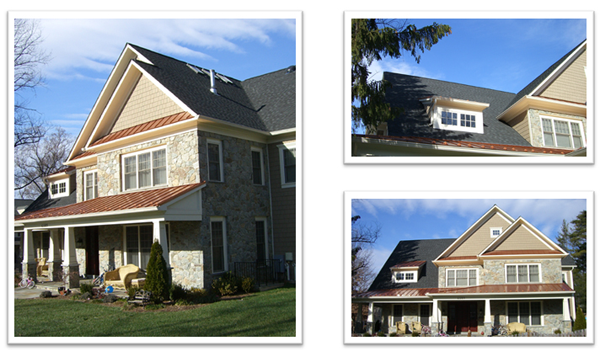Phone
Solar/Energy Efficient Roofing
Energy efficient roofing not only saves you money, it saves the environment. If you want to save money later, consider a more expensive but efficient roofing material now.
Choosing your new roof, whether a builder or homeowner, will depend on your style, needs, and budget.
Solar/Energy Efficient Roofing
White roofs reflect more of the sun's heat, while dark roofs absorb it. When less heat is absorbed into a building's interior, there is less demand on cooling costs and allows for greater energy conservation. A reflective roof can reduce peak cooling demand by 10-15%. The reduced energy costs can lower levels of pollution, especially in urban areas. Read more about this effect in the June 2009 Washington Post article here.
To look for roofing materials that are highly reflective, look at the CRRC rating. CRRC (the Cool Roof Rating Council) rates materials between 0 and 1, with a .70 or .75 and higher considered to be cool. There are also coatings for metal roofs to make them more highly reflective. In addition, roofing materials may be given the Energy Star label. For roofing materials to get an Energy Star qualification they must meet a minimum R value, which is calculated with reflectivity as well as insulation.
- Ex.: Certainteed Coolstar reflective roof
- Ex.:Englert Ultra-Cool roof coating
Solar Panels
A solar panel is a device that collects energy from the sun and turns it into electricity or heat. Solar panels are quickly becoming popular choices for renewable energy as global warming and high energy usage become critical issues internationally. Recent innovations have allowed for more eco-friendly production of solar panels: combined with energy savings and reduced CO2 output, solar panels make more sense than ever to use instead of traditional energy sources. Roof Solutions is proud to offer Certainteed's Energen Photovoltaic Solar systems, having installed the very first Energen system on the east coast. Energen allows a photovoltaic laminate to be integrated into the construction of asphalt shingle roofs. The system is unique in that it is very lightweight and requires no roof penetrations, so it will not damage the roof's integrity but will still offer all of the energy-efficiency of traditional solar panels.
Solar Hot Water Systems
A solar water heater uses sunlight to heat water for a building. The heated water can either be used for general water usage or to generate electricity. A solar water heater helps to cut down on energy costs in a more targeted manner than regular solar panels: It is estimated that water heating accounts for approximately 25% of the total energy used in a typical single-family home. In addition, a solar water heater uses clean, renewable energy and is a good choice for anyone looking for a new way to cut down on their carbon footprint.
Solar Attic Fans
Heat absorbed into attics can make an entire building much warmer. Solar attic fans reduces the temperature of attics and subsequently entire buildings, which puts much less stress on cooling systems; the increased air circulation also reduces normal vapor build-up and can help to avoid issues such as rust, rot, or mold in attics. By using a solar attic fan, not only is the stress on the cooling system reduced, but the reduction of drastic temperature changes (and the expanding and contracting that go along with those temperature changes) extends the life of the roof.
Green Roofing
Eco-friendly (Recyclable or made from recycled materials, low levels of manufacturing waste, reducing energy costs and therefore CO2 emissions)
- Metal roofs/shingles can be more easily made from recycled materials, and can more easily be recycled as well
- Ecostar made from up to 80% recycled rubber and plastic, reduces landfill waste and is durable (50 year warranty)
- Certainteed
Recycles nearly 90% of production waste - Landmark shingle production generates zero manufacturing waste
- Uses recycled content
Living/Vegetation Roof
A living or vegetated roof is one that is covered with soil and vegetation. When building a living roof, there are many factors that must be considered such as waterproofing, drainage, insulation, load-bearing, and maintenance. A living roof can be considered either intensive or extensive. An intensive living roof generally has more soil and requires more maintenance, but can have larger plants such as shrubs or trees. An extensive living roof will have a thin layer of soil as well as plants that do not require as much maintenance: they will ideally be drought-resistant and climate-appropriate. This type of roof is a good insulator and can lower both heating and cooling costs, as well as lower overall temperatures in the summer and increase wildlife habitat in urban areas. Living roofs also increase the quality and decrease the amount of stormwater runoff.





